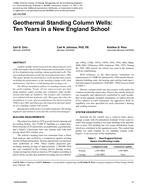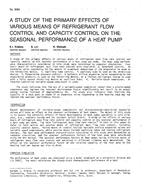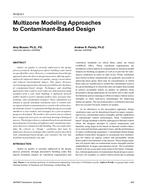Occupant behavior is well known to be random and difficult to quantify and predict. Occupancy rate, or sometimes referred as occupancy diversity factor, is commonly used in building simulation practice to estimate time dependent occupancy related loads, such as internal gains from people, hot water usage, and etc. Due to the random nature of occupant behavior, it has been technically challenging and economically expensive for researchers to conduct experiments to develop reliable and up-to-date occupancy rate profile for building design practice. As a result, there has been very few experimental studies conducted in the past decade on occupancy profile development.
This study presents an implicit method of measuring occupancy rate profile in office buildings through Information Technology (IT) sensing. The method is established by creatively taking advantage of the data acquisition mechanism of an existing IT platform-integrated sensor set. The IT platform-integrated sensor set is originally installed in individual work space to enhance end user experience in both thermal comfort and energy conservation. It includes two sets of sensors: (1) physical sensors to measure local temperature, relative humidity, and light levels; and (2) software sensors to measure computer power consumption. Measurements from physical sensors are only recorded when people log into their computer while measurements from the software sensors are recorded whenever the computer is ON. The specific recording mechanism provides us a unique opportunity to estimate the actual real-time occupancy profile in buildings. This research presents results from a pilot study conducted in a medium sized office building. Results show that the average peak occupancy rate is less than 40% and the daily occupancy profile varies among different weekdays, across different (organizational) departments and disciplines. The resulting actual occupancy rate varies considerably from what has been typically used in current design practice, which suggests that an up-to-date occupancy profile might be in need for building design community.
Citation: ASHRAE Papers CD: 2014 ASHRAE Annual Conference, Seattle, WA
Product Details
- Published:
- 2014
- Number of Pages:
- 8
- File Size:
- 1 file , 1.3 MB
- Product Code(s):
- D-SE-14-C053


